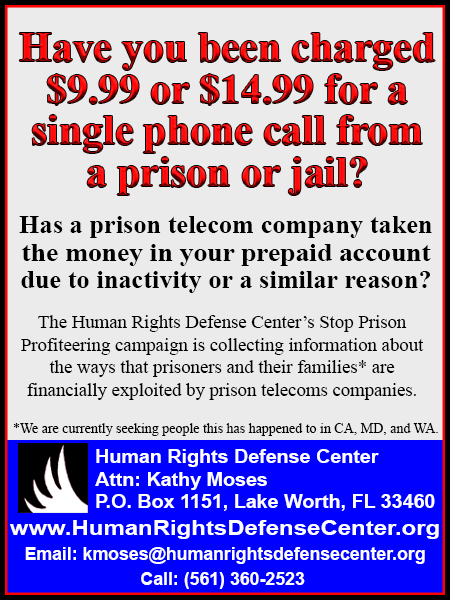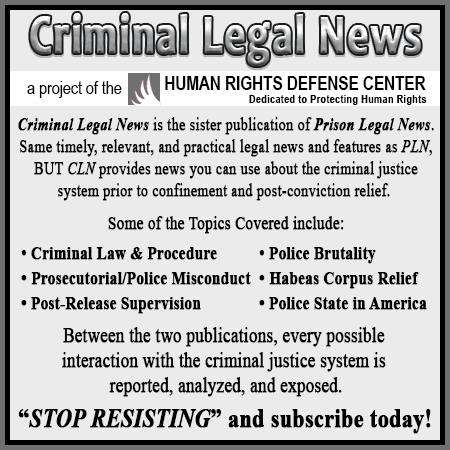Fourth Circuit: District Court Erred in Imposing ‘Managerial Role’ Enhancement Under Guidelines § 3B1.1(b) Without Making ‘Particularized Findings’ Regarding Scope of Criminal Activity and Number of Participants as Required by Guidelines §1B1.1
by Douglas Ankney
The United States Court of Appeals for the Fourth Circuit held that the U.S. District Court for the Middle District of North Carolina erred when it failed to make the requisite particularized findings required under U.S. Sentencing Guidelines (“U.S.S.G.”) § 1B1.3(a)(1)(B) before imposing the three-level enhancement under U.S.S.G. § 3B1.1(b) for a managerial role involving five or more participants.
Background
Between September 2021 and January 2022, a confidential informant (“CI”) cooperating with the Bureau of Alcohol, Tobacco, Firearms, and Explosives participated in several controlled buys of narcotics from numerous individuals in the Sanford, North Carolina, area. During four of those controlled buys, the CI contacted Keyonta McDougald who, in turn, purchased fentanyl from Brian Thomas Bright to give to the CI. In one controlled buy, the CI went to Bright’s home to purchase fentanyl, and Bright directed William Samuel Pergerson to sell the fentanyl to the CI. In another controlled buy, Bright sent Larry Bernard Brown to sell fentanyl to McDougald and the CI. McDougald also facilitated the CI in the purchase of methamphetamine from Rosa Raquel Diaz and Hugo Enrique Olvera Sanchez.
Bright and seven others—McDougald, Brown, Pergerson, Robert Terrell Bush, Diaz, Sanchez, and Tyquan Jones—were all indicted on one count of conspiracy to possess with intent to distribute fentanyl, methamphetamine, heroin, and cocaine in violation of 21 U.S.C. §§ 846, 841(b)(1)(B), and 841(b)(1)(C). Specific quantities of controlled substances were attributed to each defendant with Bright’s involvement in the conspiracy related to the fentanyl.
The Presentence Investigation Report (“PSR”) calculated Bright’s base offense level at 26 but called for an increase of three points pursuant to § 3B1.1(b) because Bright was deemed “a manager or supervisor of criminal activity involving five or more participants or that was otherwise extensive.”
At sentencing, Bright argued that the § 3B1.1(b) enhancement was inapplicable to him because his “conspiratorial activities” were limited to only McDougald and Pergerson, a total of only three participants and their criminal activities were not “otherwise extensive.” The District Court responded, in pertinent part, as follows: “[Bright] may not have known everybody that touched these drugs or everybody that distributed them, but that is not the requirement…. [H]e was almost the go-to person to get drugs to distribute to somebody else. So he was actively involved in this conspiracy. I do think that the three-level enhancement is appropriate….”
The District Court included the three-point enhancement when calculating Bright’s total offense level and arriving at a sentencing range of 78 to 97 months. The court imposed a sentence of 97 months. Bright timely appealed, arguing that the District Court erred by imposing the sentence enhancement because his “criminal activity” did not involve five or more participants or was not otherwise extensive.
Analysis
The Court noted that “Guidelines section 3B1.1 provides for varying offense level increases based on a defendant’s role in the offense. Relevant here, it provides for a three-level increase if ‘the defendant was a manager or supervisor (but not an organizer or leader) and the criminal activity involved five or more participants or was otherwise extensive.’” § 3B1.1(b). A two-level increase applies if “the defendant was an organizer, leader, manager, or supervisor in any criminal activity other than described in (a) or (b) [in § 3B1.1].” § 3B1.1(c).
The Court explained that the “correct questions” to ask in determining whether the three-level or two-level increase is applicable are: (1) “What was the criminal activity?” and (2) “Was the criminal activity ‘otherwise extensive?’” See §§ 3B1.1(b)-(c).
The Government argued that examining § 3B1.1 ends the inquiry, but the Court rejected that approach, declaring that the “Government is wrong.” The Court stated that the “Relevant Conduct” section of § 1B1.3(a)(1)(A) and (B) instruct that “adjustments in Chapter Three [i.e., § 3B1.1] shall be determined on the basis of the following”:
(1)
(A) all acts and omissions committed, aided, abetted, counseled, commanded, induced, procured, or willfully caused by the defendant; and
(B) in the case of a jointly undertaken criminal activity (a criminal plan, scheme, endeavor, or enterprise undertaken by the defendant in concert with others, whether or not charged as a conspiracy), all acts and omissions of others that were --
(i)
within the scope of the jointly undertaken criminal activity,
(ii)
in furtherance of that criminal activity, and
(iii)
reasonably foreseeable in connection with that criminal activity;
that occurred during the commission of the offense of conviction, in preparation for that offense, or in the course of attempting to avoid detection or responsibility for that offense[.]
Furthermore, the commentary to the section states: “In order to determine the defendant’s accountability for the conduct of others under subsection (a)(1)(B), the court must first determine the scope of the criminal activity the particular defendant agreed to jointly undertake (i.e., the scope of the specific conduct and objectives embraced by the defendant’s agreement).” § 1B1.3 cmt. n.3(B).
Contrary to the Government’s contention that no authority supports interpreting § 1B1.3 to require that only “jointly undertaken” criminal activity by co-conspirators constitutes relevant conduct, the Court stated that the introductory language of § 1B1.3 states that it applies when courts calculate “adjustments in Chapter Three” and that governing case law is in alignment with the introductory language. Consequently, the Court rejected the Government’s position, declaring that “§ 1B1.3 clearly applies when interpreting” § 3B1.3. See United States v. Evans, 90 F.4th 257 (4th Cir. 2024) (holding before “drugs seized from a co-conspirator may be attributed to a defendant at sentencing, a district court must make ‘particularized findings’ as to the scope of the defendant’s agreement to jointly undertake criminal activity as well as to foreseeability”); see also United States v. Flores-Alvarado, 779 F.3d 250 (4th Cir. 2015) (“‘in order to attribute to a defendant for sentencing purposes the acts of others in jointly-undertaken criminal activity’ we require sentencing courts to ‘make particularized findings with respect to both the scope of the defendant’s agreement and the foreseeability of [the conduct at issue]’”); United States v. Bolden, 325 F.3d 471 (4th Cir. 2003) (“a sentencing court, in order to hold a defendant accountable for the conduct of his coconspirators, should make particularized findings with respect to … § 1B1.3(a)(1)(B)”).
Turning to the present case, the Court stated that the District Court failed to make “particularized findings regarding the scope of the criminal activity” in imposing the three-level enhancement under § 3B1.1(b). Similarly, the District Court failed to make any determination as to whether the criminal activity was “otherwise extensive.” It simply indicated that there were four co-conspirators and that Bright “had a fairly significant role in this conspiracy.”
The Court explained that because the District Court failed to make the required findings under § 1B1.3, as required by “Bolden and Flores-Alvarado and re-emphasized in Evans, it is unclear what the district court thought the criminal activity encompassed or how many participants” it concluded were involved. Thus, the Court held that the District Court failed to make the “particularized findings” required by § 1B1.3(a)(1)(B) regarding the “scope of the jointly undertaken criminal activity, whether the acts and omissions of others were in furtherance of that criminal activity, and whether the acts and omissions were reasonably foreseeable to” Bright. § 1B1.3(a)(1)(B)(i)-(iii).
Accordingly, the Court vacated Bright’s sentence and remanded for “resentencing in order for the district court to make the requisite particularized findings required pursuant to Guidelines § 1B1.1, or to find that the criminal activity was ‘otherwise extensive.’” See: United States v. Bright, 125 F.4th 97 (4th Cir. 2025).
As a digital subscriber to Criminal Legal News, you can access full text and downloads for this and other premium content.
Already a subscriber? Login





